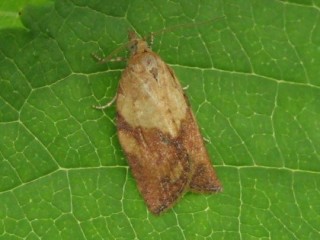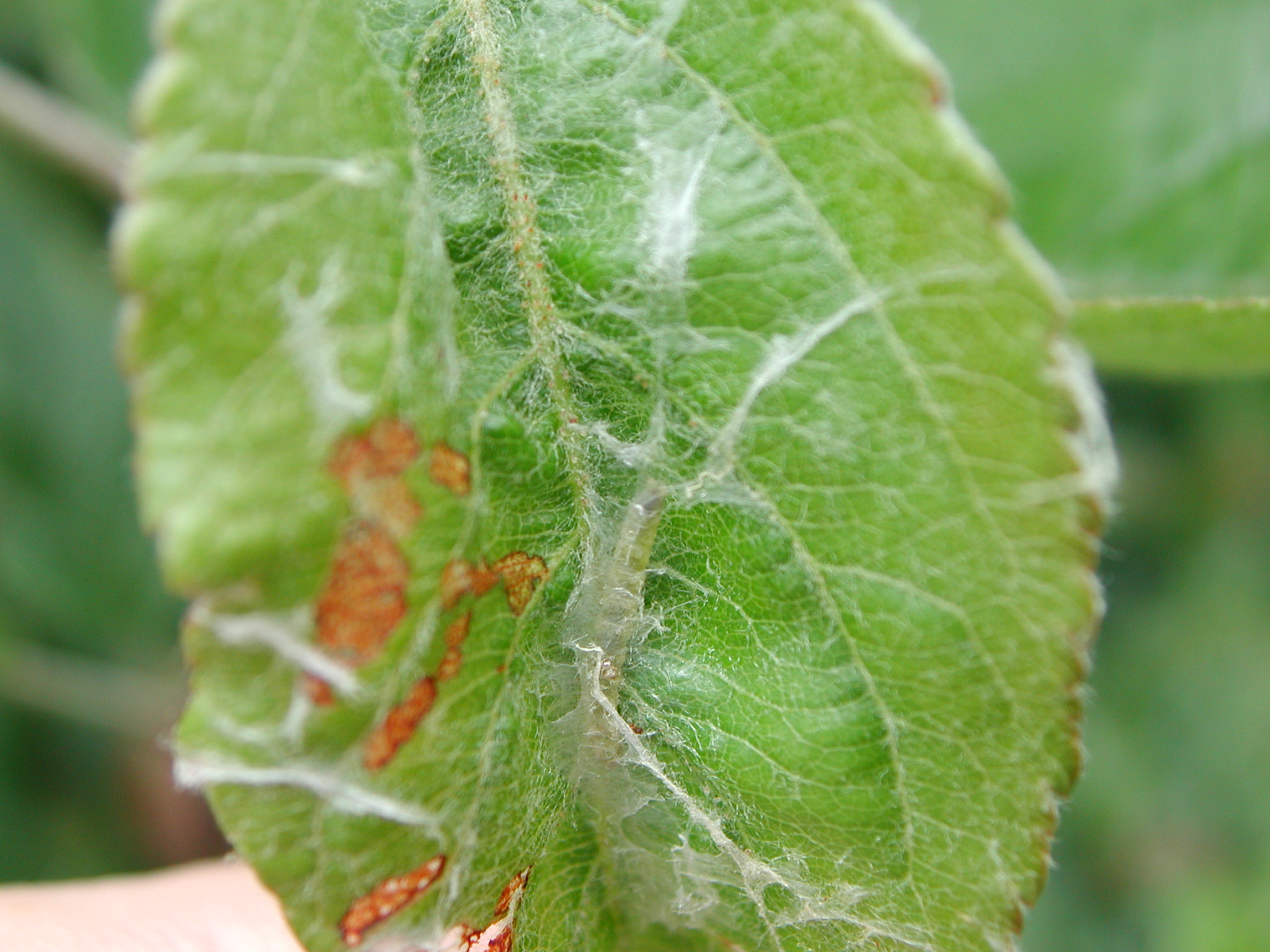
Adult (resting)
- In the adults the forewing is characteristically curved.
- Male moths are 6-10 mm long, with the front part of the forewing generally much lighter than the back, which is rusty dark red/brown.
- Much lighter forms may also be found.
- The females are generally larger than the males (7-13 mm long) and are more difficult to identify as colour varies from a uniform light yellowish brown with almost no distinguishing marks.
- However, females do have a small dark spot over the centre of the body, on the forewings, visible when at rest .
Egg
- Usually on the upper surface of plant leaves in batches of 2 – 170.
- They are flat with a pebbled surface.
- They overlap each other within the raft to form a smooth mass.
- Approximately 0.7 mm by 1.0 mm, they are initially white to pale green and change to a paler yellow green as they develop.
Larvae
The identification of larvae is problematic as they are very similar to the larvae of other leaf rollers.
- The first larval instar [stage] has a dark brown head; all other instars have a light fawn head and prothoracic plate [plate behind the head].
- Over-wintering larvae are darker.
- First instar larvae are approximately 1.6 mm long, and final instar larvae range from 10 to 18 mm in length.
- The body of a mature larva is medium green with a darker green central stripe and two side stripes.
- The last body segment breathing pores (spiracles) are larger than rest.
- They spin fine webbing and often occur in leaf rolls or beneath a leaf tied to fruit.

Other pests with which light brown apple moth may be confused
- Larvae of several leaf-rolling tortrix moths are very similar and are difficult to distinguish from each other.
- Larvae of the summer fruit tortrix moth and fruit tree tortrix moth, occur commonly in orchards in the UK, especially in the south and east, and are particularly difficult to distinguish from those of the light brown apple moth.
